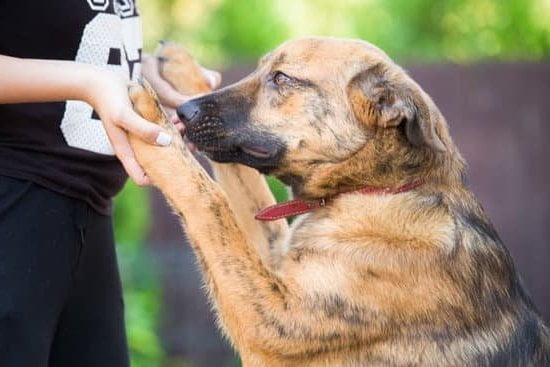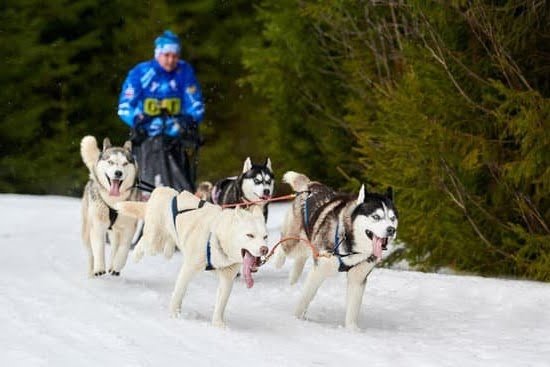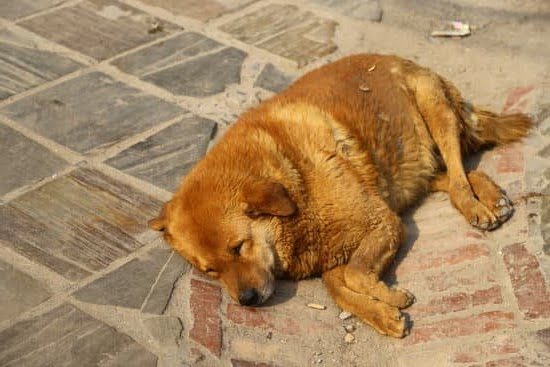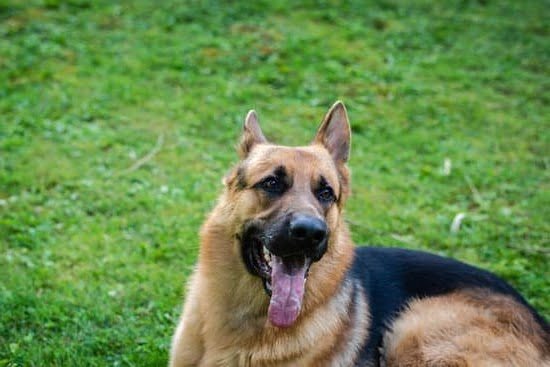Are you tired of constantly cleaning up after your dog? If so, you may be wondering how to potty train your dog in 24 hours. Potty training is an essential part of owning a dog, and it’s crucial for both the well-being of your pet and the cleanliness of your home. In this article, we will explore the importance of potty training for dogs and provide you with tips on how to successfully train your furry friend.
Potty training is not only about maintaining a clean living environment but also about ensuring the happiness and comfort of your dog. When properly trained, your pet will feel more confident and secure in their surroundings. Furthermore, potty training can help strengthen the bond between you and your dog, as it establishes clear communication and trust between the two of you.
In order to successfully potty train your dog in 24 hours, it’s important to have the right supplies on hand. Additionally, establishing a consistent routine for potty breaks and utilizing positive reinforcement are key factors in achieving quick results. This article will provide you with all the necessary information on how to equip yourself for this process, as well as tips on implementing these fundamental strategies to achieve success.
Gathering the Necessary Supplies for Successful Potty Training
When it comes to successfully potty training your dog in just 24 hours, having the right supplies can make a significant difference. One of the key items you will need is high-quality, odor-neutralizing cleaning products. Accidents are bound to happen during the potty training process, and these products will help you effectively clean and remove any lingering odors, discouraging your dog from eliminating in the same spot again.
In addition to cleaning products, it’s important to have an ample supply of training treats on hand. Positive reinforcement is a powerful tool when it comes to potty training, and having delicious treats that your dog loves will encourage good behavior and make the training process more effective.
Another essential item for successful potty training is a leash. Whether you live in an apartment or a house with a yard, using a leash during potty breaks allows you to control your dog’s movements and keep them focused on their business. This helps create a routine and reduces the risk of distractions that can prolong the process.
Lastly, consider investing in a designated potty area such as pee pads or a specific outdoor spot. By providing your dog with a consistent place to eliminate, you can help reinforce good habits and accelerate the potty training process.
| Supplies | Importance |
|---|---|
| Cleaning products | Neutralize odors and discourage repeat accidents |
| Training treats | Encourages good behavior through positive reinforcement |
| Leash | Facilitates control and focus during potty breaks |
| Designated potty area | Reinforces good habits and accelerates training process |
Creating a Consistent Routine for Your Dog’s Potty Breaks
The key to successful potty training for your dog is creating a consistent routine for their potty breaks. Dogs thrive on routine, and establishing a regular schedule for when they go outside can help them understand where and when it is appropriate to relieve themselves.
Start by taking your dog outside first thing in the morning, as well as after meals, playtime, or naps. This will help them associate these times with going potty outside. Use a specific door to go in and out, which will signal to your dog that it’s time to go potty.
Consistency is key, so try to take your dog out at the same times each day. This will help them develop good habits and prevent accidents inside the house. Remember that puppies have smaller bladders and will need more frequent potty breaks, so be prepared to take them out every couple of hours.
It’s also important to pay attention to your dog’s body language and behavior. They may start sniffing around or circling before they go potty, so if you notice these signs, take them outside immediately. By being observant and consistent with their routine, you can effectively teach your dog how to potty train in 24 hours.
| Key Points | Details |
|---|---|
| Routine | Establish a regular schedule for potty breaks |
| Consistency | Take your dog out at the same times each day |
| Body language | Pay attention to your dog’s behavior and signs that they need to go outside |
Utilizing Positive Reinforcement and Rewards for Successful Potty Training
Positive reinforcement is a key element in successfully potty training your dog in 24 hours. This method involves rewarding your dog for exhibiting the desired behavior, such as going potty outside.
One of the most effective rewards for dogs is treats, so be sure to have plenty of small, easily digestible treats on hand during the potty training process. Whenever your dog goes potty in the designated outdoor area, immediately praise and reward them with a treat to reinforce this positive behavior.
In addition to using treats, verbal praise and affection are also important forms of positive reinforcement. When your dog successfully goes potty outside, be sure to shower them with verbal praise and physical affection, such as pets or belly rubs. This positive attention will help your dog associate going potty outside with a happy and rewarding experience.
It’s also important to be consistent with your rewards and always provide them immediately after your dog exhibits the desired potty behavior. Consistency is key when it comes to using positive reinforcement for potty training. By consistently rewarding your dog for going potty outside, you are reinforcing this behavior and encouraging them to continue doing so in the future.
Overall, utilizing positive reinforcement and rewards is an effective way to potty train your dog in a short amount of time. By consistently praising and rewarding your dog for going potty outside, you can help them quickly understand what is expected of them and establish good potty habits within 24 hours.
Implementing Crate Training as a Tool for Potty Training
Benefits of Crate Training
Crate training can be an effective tool for potty training your dog in a short period of time. The main benefit of crate training is that it helps to limit your dog’s access to the rest of the house, reducing the chance of accidents occurring when you are not around to supervise.
Dogs have a natural instinct to keep their den clean, so they are unlikely to soil their sleeping area. This makes it easier for them to learn bladder and bowel control.
Getting Started With Crate Training
When implementing crate training for potty training, it is important to introduce the crate gradually and make it a positive and comfortable space for your dog. Start by placing treats or toys inside the crate to encourage your dog to explore and enter voluntarily. Once your dog is used to going in and out of the crate, start feeding meals inside it as well.
It’s crucial that the crate is just big enough for your dog to stand up, turn around, and lie down comfortably. If the crate is too large, your dog may designate one end as a bathroom area. You can adjust the size of the crate as your puppy grows by using dividers.
Using Crate Training for Potty Breaks
When potty training your dog in 24 hours, using a schedule for potty breaks is essential. Take your dog outside every two hours, including after meals, playtime, and waking up from a nap. When you cannot supervise your dog indoors or at night, place them in their crate.
Remember not to use the crate as punishment – it should always be associated with positive experiences such as treats and praise when they go inside willingly. With consistency and patience, implementing this method along with positive reinforcement will help you successfully potty train your dog within 24 hours.
Understanding the Signs That Your Dog Needs to Go Potty
Body Language and Behavior
One of the key aspects of successful potty training is understanding your dog’s body language and behavior when they need to go outside. Some common signs that your dog needs to go potty include pacing, whining, circling, and sniffing around. It’s important to pay close attention to these cues and act quickly to take your dog outside when you notice them.
Time Since Last Break
Monitoring the amount of time since your dog’s last potty break can also help in determining when they need to go again. Puppies, in particular, have smaller bladders and will need more frequent breaks. As a general rule, puppies may need a potty break every 1-2 hours, while adult dogs can typically hold it for longer periods. However, it’s important to note that individual dogs may have different needs based on their age, size, and breed.
Accidents
If your dog has an accident inside the house, it’s essential not to scold or punish them. Instead, use accidents as a learning opportunity and try to identify any patterns or triggers that led to the accident. By keeping track of when accidents occur and what was happening beforehand, you can start to anticipate your dog’s potty needs more effectively.
By being attentive to these signs and cues from your dog, you can proactively prevent accidents inside the house and reinforce positive potty behaviors as part of effective potty training techniques.
Troubleshooting Common Potty Training Challenges and How to Overcome Them
Potty training a dog in 24 hours is an ambitious goal, and it’s not uncommon to encounter challenges along the way. Here are some common potty training challenges that dog owners may face, along with effective strategies for overcoming them:
1. Accidents in the house: It’s normal for dogs to have accidents, especially during the initial stages of potty training. To overcome this challenge, make sure to clean up accidents thoroughly using a pet-specific cleaner to remove any lingering odors. Additionally, consider using belly bands or diapers as a temporary solution while your dog learns appropriate potty behavior.
2. Resistance to going outside: Some dogs may be hesitant to go potty outdoors, especially if they are used to eliminating in the house. To address this challenge, gradually introduce your dog to outdoor potty breaks by providing plenty of encouragement and praise when they do their business outside. You can also try using a designated potty area with natural or artificial grass.
3. Inconsistencies in routine: A consistent potty schedule is crucial for successful training. If you’re struggling with maintaining a regular routine, consider setting alarms or reminders on your phone to ensure that your dog gets timely potty breaks throughout the day.
By addressing these common challenges and implementing effective solutions, you can increase the likelihood of successfully potty training your dog within 24 hours.
Celebrating Success and Maintaining Good Potty Habits for Long-Term Success
Potty training your dog in 24 hours is a challenging but achievable goal. Once you have successfully potty trained your dog, it is important to celebrate the success and maintain good potty habits for long-term success. Consistency, positive reinforcement, and understanding your dog’s needs are key to maintaining their potty training.
To celebrate your dog’s potty training success and maintain good habits, consider the following tips:
- Reward your dog: Continue to reward your dog with treats and praise every time they go potty in the designated area. This positive reinforcement will help reinforce their good behavior.
- Stick to a routine: Maintaining a consistent schedule for potty breaks will help prevent accidents in the future. Take your dog out at the same times every day, such as after meals, playtime, and before bedtime.
- Keep an eye on your dog’s behavior: Watch for signs that indicate when your dog needs to go potty, such as sniffing around or circling. By recognizing these cues, you can proactively take them outside to avoid accidents indoors.
In addition to celebrating your dog’s successful potty training, it is important to continue reinforcing good habits to ensure long-term success. With patience, consistency, and positive reinforcement, your dog will continue to be well-trained in their potty habits.
Conclusion
In conclusion, potty training your dog in 24 hours is a challenging but achievable task with the right approach and consistency. By understanding the importance of potty training for dogs and gathering the necessary supplies, creating a consistent routine, and utilizing positive reinforcement, you can set your dog up for success.
Implementing crate training as a tool for potty training can also be highly effective, as well as being able to recognize the signs that your dog needs to go potty.
While there may be common challenges along the way, such as accidents in the house or resistance from your dog, it’s important to troubleshoot these issues with patience and persistence. By celebrating small successes and maintaining good potty habits in the long term, you can ensure that your dog remains well-trained and consistently follows their potty routine.
Ultimately, successfully potty training your dog in 24 hours not only leads to a cleaner and more pleasant living environment for both you and your pet but also contributes to a better bond between you. Remember that every dog is unique, so be patient and stay consistent in your efforts. With dedication and the right techniques, you can achieve successful potty training with your furry friend.
Frequently Asked Questions
How Long Does It Take to Fully Potty Train a Dog?
The time it takes to fully potty train a dog can vary depending on the breed, age, and individual temperament of the dog. It typically takes several weeks to a few months of consistent training and positive reinforcement.
How Do You Stop a Dog From Peeing and Pooping in the House?
To stop a dog from peeing and pooping in the house, it’s important to first rule out any medical issues by consulting with a veterinarian. Once medical issues are ruled out, consistent supervision, a regular potty schedule, positive reinforcement, and proper cleaning of accidents are key to addressing this behavior.
How Do You Potty Train a Dog in 2 Days?
Potty training a dog in just 2 days is an ambitious goal and may not be realistic for every dog. However, it is possible to make significant progress in that time by closely supervising the dog, establishing a strict potty schedule, using high-value treats for positive reinforcement, and being patient but consistent in training methods.

Welcome to the blog! I am a professional dog trainer and have been working with dogs for many years. In this blog, I will be discussing various topics related to dog training, including tips, tricks, and advice. I hope you find this information helpful and informative. Thanks for reading!





